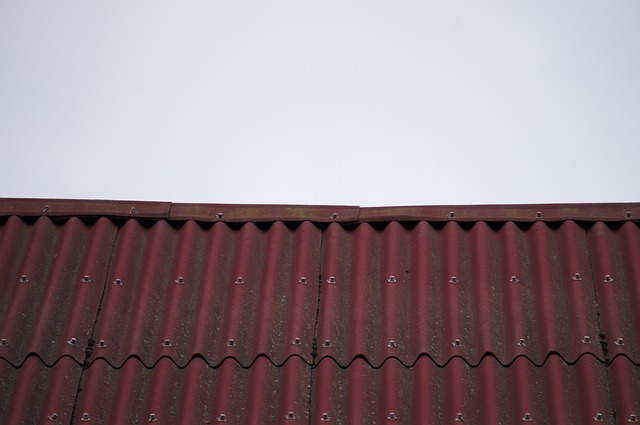Roof-mounted solar panels are a popular and efficient way to harness renewable energy, offering environmental benefits and financial savings. They consist of solar photovoltaic (PV) modules securely attached to a frame, capturing sunlight and converting it into electricity. Evaluating roof space, assessing structural integrity, and considering obstructions are crucial steps before installation. Flexible solar panel systems adapt to various roofs, maximizing energy generation potential for unique architectural designs or space constraints. Regular cleaning, inspection, and maintenance are essential for optimal performance, with high-quality components and professional checks extending system lifespan.
In today’s pursuit of sustainable energy solutions, roof-mounted solar panels offer a versatile option for both new constructions and retrofits. This comprehensive guide explores the flexibility of integrating these panels into existing roofs or as part of new installations. We’ll delve into understanding panel technology, evaluating rooftop space, and uncovering benefits and considerations specific to flexible systems. Additionally, we provide a step-by-step installation process and insights on maintenance, ensuring you’re equipped with the knowledge for informed decisions regarding roof-mounted solar panels.
Understanding Roof-Mounted Solar Panels: A Comprehensive Overview
Roof-mounted solar panels are a popular and efficient way to harness renewable energy, offering both environmental benefits and financial savings. These panels are designed to be installed on rooftops, utilizing the available space for solar power generation. Understanding their functionality is key when considering this sustainable option.
The basic concept involves arranging solar photovoltaic (PV) modules or panels on a frame that attaches securely to the roof structure. This system captures sunlight, which is then converted into electricity through the photovoltaic effect. The panels can be customized to fit various roof shapes and sizes, ensuring seamless integration with existing architecture. Roof-mounted solar installations provide a flexible solution, allowing homeowners and businesses to generate clean energy while potentially reducing their carbon footprint.
Evaluating Your Rooftop Space for Solar Panel Installation
Evaluating your rooftop space is a crucial step before installing roof-mounted solar panels. Start by assessing the overall size and shape of your roof to determine if it can accommodate the necessary panel arrangement. Consider the orientation and slope as well; south-facing roofs in the Northern Hemisphere, for instance, receive optimal sunlight exposure throughout the day. Obstructions like chimneys, vents, or neighboring buildings can cast shadows, affecting energy production, so make sure to identify any potential blockers.
Additionally, examine your roof’s structural integrity. Older roofs may need reinforcement to support the weight of solar panels and their mounting systems. It’s also essential to check if there are any leaks or damage that require repair before installation to ensure long-term efficiency and prevent further complications.
Benefits and Considerations of Using Flexible Solar Panel Systems
Flexible solar panel systems offer a unique advantage when it comes to installing renewable energy solutions, especially in scenarios where traditional roof-mounted solar panels might face challenges. One of the key benefits is their adaptability; these flexible panels can be easily integrated into various roof types and spaces, including those with irregular shapes or limited area. This makes them an ideal choice for residential, commercial, and industrial buildings that may have unique architectural designs or space constraints.
Additionally, flexible solar panels provide a more efficient use of available rooftop real estate. Their lightweight design and thin profile allow for multiple configurations, enabling homeowners and businesses to maximize their energy generation potential. These systems also offer ease of installation, often requiring less time and expertise compared to traditional roof mounting. Furthermore, their durability and weather resistance ensure long-term performance, making them a sustainable investment for any property owner considering renewable energy options.
Step-by-Step Guide to Installing Roof-Mounted Solar Panels
Step-by-Step Guide to Installing Roof-Mounted Solar Panels
1. Assess Your Roof: Begin by evaluating your roof’s structure, slope, and orientation. Roof-mounted solar panels require a steeper angle for optimal sun exposure, typically between 30-45 degrees. Ensure your roof can support the weight of the panels and mounting hardware. A structural engineer’s consultation may be needed if you’re unsure.
2. Prepare the Roof: Clean your roof thoroughly to remove debris and ensure no shading occurs from nearby objects. Inspect for any damage or leaks, repairing as necessary. For existing roofs, determine the best location(s) to install the panels while avoiding obstructed sunlight. New installations allow more flexibility in choosing the ideal placement based on design and energy requirements.
Maintenance and Longevity of Flexible Solar Panel Installations
Flexible solar panel installations, whether integrated into existing roofs or as part of new constructions, offer a range of benefits, including ease of installation and adaptability to various spaces. However, their maintenance and longevity require specific considerations compared to traditional roof-mounted solar panels. Regular cleaning and inspection are crucial to ensure optimal performance, as debris accumulation or shading can significantly impact energy generation. Compared to rigid panels, flexible designs may have different degradation rates due to material characteristics and environmental exposure; thus, proactive monitoring is essential.
Additionally, choosing high-quality components from reputable manufacturers can extend the lifespan of these systems. Proper sealing and protective coatings on flexible panels help resist moisture intrusion and UV damage, common issues in outdoor environments. Regular maintenance checks by professionals familiar with such installations will ensure any potential problems are addressed early, maximizing the return on investment for flexible solar power solutions.
Roof-mounted solar panels offer a versatile solution for both new constructions and existing buildings. By understanding your rooftop space, evaluating benefits like energy savings and environmental impact, and following proper installation and maintenance practices, you can leverage the power of flexible solar panel systems to meet your energy needs sustainably. This comprehensive guide equips homeowners with knowledge to make informed decisions regarding roof-mounted solar panels, ensuring a bright and green future.
